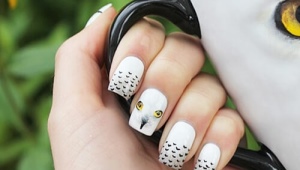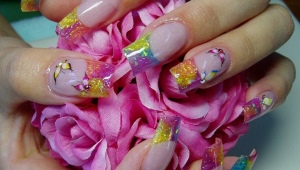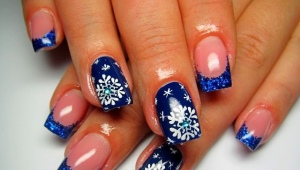Manicure brushes

Today, many girls spend a lot of time and money on their manicure. Not everyone goes to beauty salons. Some do it on their own. In order for the result to be amazing, it is important to correctly use manicure brushes.
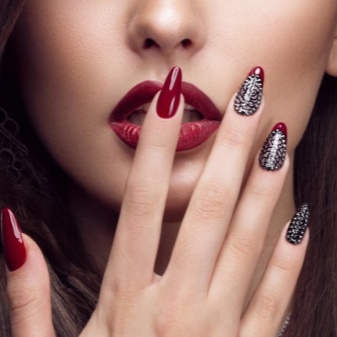

Types and purpose
Tools for manicure are always available in specialized stores. They are available both individually and in sets. It usually includes several basic brushes, which are almost always necessary for performing different types of manicure. Each of them has its own purpose:
- A dotted brush is used to apply small details. With its help, it is possible to carefully draw various patterns on the nail. It also holds rhinestones or sequins well.
- The petal brush has a narrower corner than the point brush, and the shape is flatter. She applies simple strokes or sparkles, as well as unusual patterns. This tool often creates ethnic motifs on the nails.
- A fan brush will be needed to apply abstract drawings and landscapes to the nail. This allows you to make its shape in the form of a semicircle. She blends shades and midtones well and applies glitter.
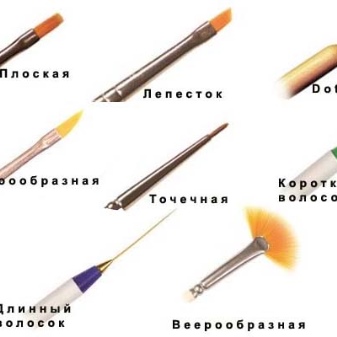

- For a simultaneous set of several varnishes, a flat beveled brush is chosen, which is also called a “dagger-shaped”.With its help, you can create both a thin and a complex three-dimensional pattern.
- To completely cover the surface of the nail with varnish, you need a wide brush. This tool allows you to implement interesting and intricate ideas for manicure.
- A device with a short pile is usually used to draw leaves and all kinds of curls.
- A liner brush, or hair, comes with a pile of different lengths. It can create animalistic drawings, floral ornaments, geometric patterns or draw straight lines.
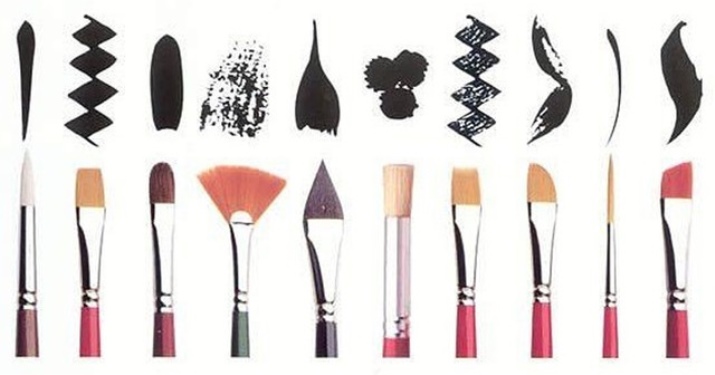
Manicure brushes are also divided into 4 groups. The criterion is the material with which they will work.
- Paint brushes used in the event that it is necessary to make drawings with your favorite varnish, but the brush in the bottle itself does not correspond to the desired thickness. They can also be used for pedicures, as their length is longer than the length of a brush in varnish.
- Acrylic brushes needed to grow nails. With their help, create the necessary bend and model the shape. They differ in stiffness and length of the pile. The brush beam is elastic and easily restores its original shape after pressing. The tip of this tool gently lays out powder while creating a cuticle line.
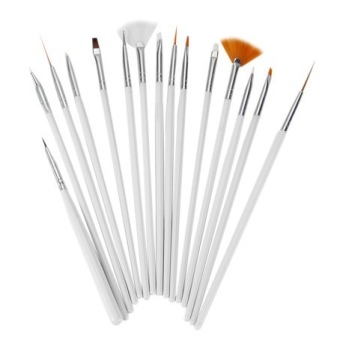
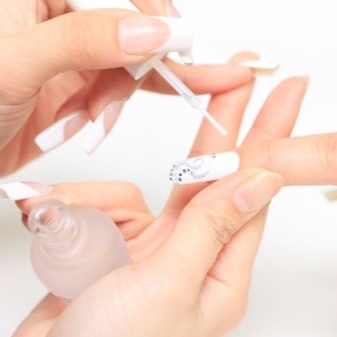
- Gel brushes differ in their structure. Their pile is stiffer than other brushes. They are shaped like a square or rectangle. Due to these properties, it is easy to work with fluid and viscous gel with such a tool.
- Nail art brushes is always in the set of masters of artistic painting.

What material to choose?
It can be difficult for beginners in nail art to decide on the choice of material from which manicure brushes are made. It can be natural or synthetic. The final result depends on its features.
The material for making natural brushes is usually sable wool or kolinsky. The bristles of these brushes are of high quality. They do not require special care, but they will last a long time. With such tools it is convenient to draw ornaments of varying complexity using various types of paints.
The polymeric material from which synthetic manicure devices are made significantly reduces their cost. These brushes hold the varnish well and do not allow it to spread.
They are recommended for beginners because they are good for practicing and working out patterns. But keep in mind that their shelf life is much shorter.
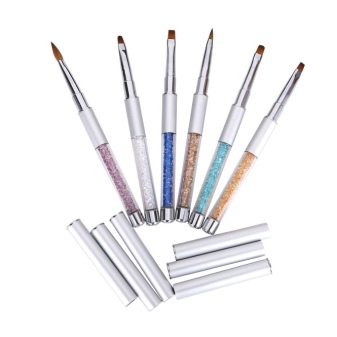
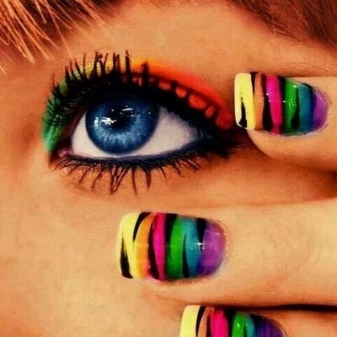
The main advantage of silicone brushes is their durability. At this point, they surpass even natural bristle tools. These brushes are great for fine details.
Professional craftsmen prefer devices made from natural fibers. They appreciate their dense structure, moderate rigidity and long service life.
Care Tips
In order for the tool to last as long as possible, it must be properly looked after. Manicure brushes must be used exclusively for nail design. You should not draw with them on paper, so as not to deform the pile. When using conventional paint instead of varnish, the hairs often fall out.
Not only a long stay of the brush in water leads to a change in its shape, but even a short one will lead to the loss of the original appearance of the pile. You can return it by holding the brush in hot water for several minutes.
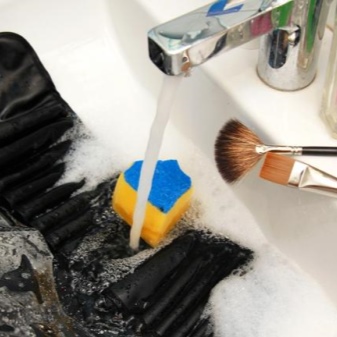
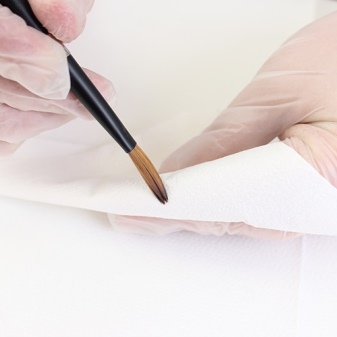
To prevent the varnish from drying out on the bristles of the brush, they must be washed immediately after use. If you do not do this on time, you will need acetone to clean them, which damages the structure of the fibers.The bristle of the brush will wear off very quickly when using a palette with an uneven surface. To avoid this result, you should not rub the tool against the napkin with force.
To extend the life of the instrument, apply cuticle oil to it at the end of the procedure. Only well-dried brushes can be placed in the storage case. Exposure to the hot air of a hair dryer will be detrimental to instrument lint.
How to do at home?
Beginners for practicing patterns and small details can make a nail art tool from a regular brush for painting with watercolors. This is easy to do on your own at home, with only a brush and tongs.
With the help of nail clippers, small tufts of villi are carefully removed at the very base of the brush from the edge to the center. It is necessary to try so that as a result the brush is in the middle and does not move to one side. Cut the pile in small sections so as not to damage the instrument. The number of cut fibers is determined by the required size of the future tool.
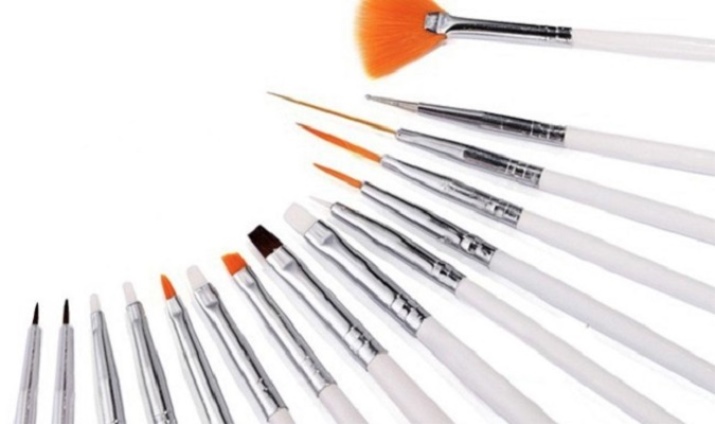
A good inexpensive paint brush can be converted into a tool of the required design and size. Caring for it is the same as for a specialized manicure brush.
It is important to remember about the careful attitude to the tool so that it lasts as long as possible.
What can be replaced?
Beginning nail artists can use paint brushes instead of expensive professional tools. These can be wide or narrow brushes, depending on the purpose of their application. They are good for training and gaining experience.
What patterns can you make?
Having in the arsenal of brushes of various sizes and shapes, you can realize unique and delightful fantasy designs.To learn art painting, you need to start with simple lines, and then combine them into a common composition. As soon as the hand moves confidently, you can move on to a more original and complex ornament.
With a petal brush, Chinese painting is performed on the nails. This technique is a plant motifs: twigs, flowers and trees. It uses various techniques, such as wave, aqua, openwork, smooth surface. The result looks original and very romantic on the nails.
A flat brush finds its use when creating an ombre effect on nails, in which one shade smoothly transitions into another. To do this, you need to add several different colors to the palette. You can also create a gradient effect on your nails with a sponge. This nail design is suitable not only for every day, but also for special occasions.
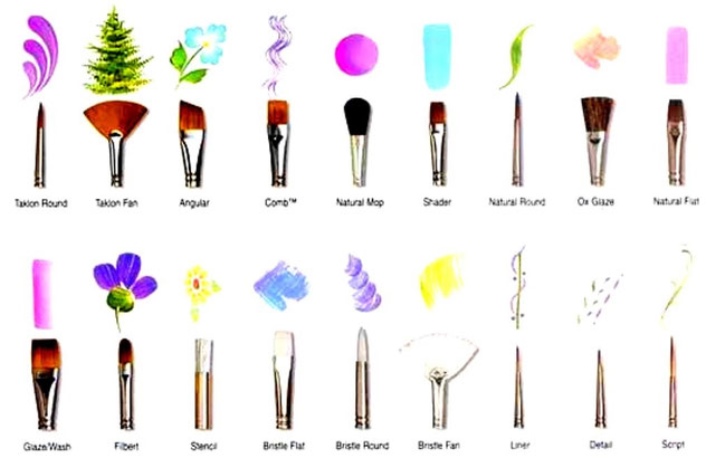
A thin brush ideally displays a smile line for a French manicure. This elegant design can be done in any color. At the same time, the nails look very stylish.
It is most convenient to cover the nail with sparkles with a fan brush. Previously, the desired area is treated with a colorless varnish. Before it dries, you can distribute the sparkles, scattering them from a fan brush onto the nail. To remove excess, use a cotton swab.
Depending on the thickness and length of the pile, you can get all sorts of patterns. A thin brush with a pile of more than 10 mm allows you to get long neat lines in the picture. More often used tools with a pile thickness of 7 to 10 mm. They can create wave-like patterns on the nails. Twigs and ornaments are made with a brush with a thickness of 3 to 7 mm.
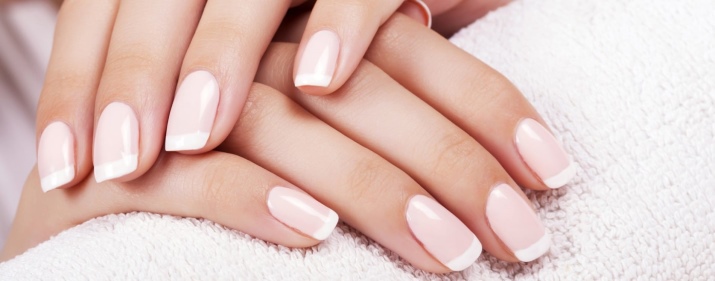
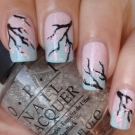
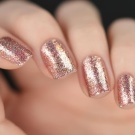
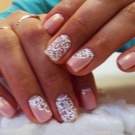
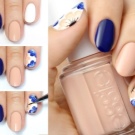
The popular painting in the Gzhel style is easy to create in manicure using a wide flat brush.This painting is based on plot and floral ornaments, which are applied with brush strokes on the white background of nails. The most common elements of Gzhel painting patterns include strokes, lines and dots. There are more complex options in the form of edging, droplets and strokes with a shadow.
Manicure brushes can be compared with the artist's tools, with which masters realize their unusual fantasies and ideas on marigold canvases. Manicure can become a real creative process in which each girl can show her individuality and make her nails creative and non-standard.
This video will tell you about the care and storage of manicure brushes.






















